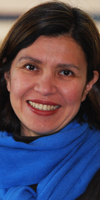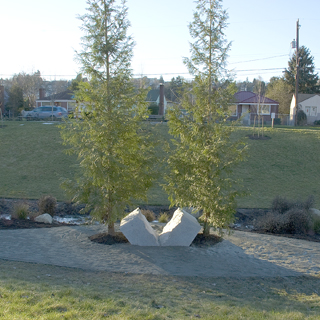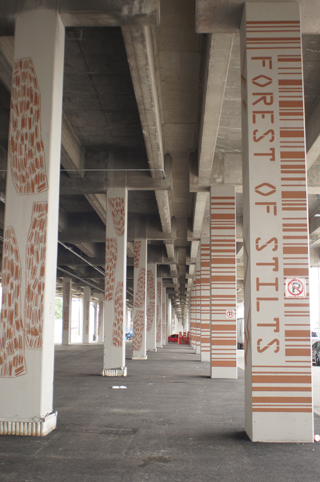|
Subscribe / Renew |
|
|
Contact Us |
|
| ► Subscribe to our Free Weekly Newsletter | |
| home | Welcome, sign in or click here to subscribe. | login |
Construction
| |
 |
August 30, 2012
Artists turn the spotlight on infrastructure
City of Seattle

Yampolsky
|
Major infrastructure changes are coming in 2013 to the city of Seattle. Next year will also be the 40th anniversary of Seattle’s 1 percent for art ordinance, allocating 1 percent of eligible capital construction costs to artwork.
Visible and often invisible systems and constructions that comprise infrastructure shape our public realm and provide rich opportunity for exploration by artists. The Public Art Program of the Seattle Office of Arts & Cultural Affairs augments city libraries, community centers, parks and open spaces, fire stations and police precinct houses, as well as streetscapes and utility facilities. The latter two categories are rich in infrastructure artwork projects.
SDOT
A number of current projects fall under the partnership between the Office of Arts & Cultural Affairs and the Seattle Department of Transportation. An art plan written by Daniel Mihalyo specifically for SDOT guides the department in integrating artwork in both the routine work (such as paving) and major projects (such as transportation infrastructure) it undertakes.
A sampling includes:
• The First Hill Streetcar line from Pioneer Square to Capitol Hill has provided an opportunity for art interventions. Claudia Fitch worked with the system designers to include a series of installations on the poles that hold the catenary wire that powers the streetcar, marking key stations along the alignment. These artworks will be installed during construction in 2013.
• Jen Dixon is invigorating the streetscape by salvaging, screenprinting on and attaching SDOT’s street signs to a railing being installed along the new sidewalk and cycle track at Linden Avenue North. In a narrow plane on the east side of the street, the artwork will make allusions in its undulating forms to a roller coaster that was once a fixture nearby.
• The two artists of Merge Conceptual Design saw the forest of columns that hold up the existing and new portions of the Spokane Street Viaduct as an opportunity to tell stories about the Sodo neighborhood. Ten different color and image schemes recollect the natural history of the area, the industries that flourished there and wildlife that inhabited the site. The columns are being installed and the work is expected to be ready in late September.
Seattle Public Utilities
Much of the work of Seattle Public Utilities includes unseen infrastructure (buried reservoirs, underground pipes and tanks, and protected plants and pumps) that provides water resources, drainage and wastewater systems, and garbage disposal and recycling facilities whose functions can be revealed and celebrated by artists.
To address flooding issues in Madison Valley, SPU completed a detention facility in 2009 that can hold stormwater flows and in dry weather serves as a neighborhood amenity, with pathways, benches and plantings. Throughout this site, artist Adam Kuby placed carved and split granite blocks adjacent to living trees, anticipating that the growth of the trees will push the blocks apart or together, alluding to the power of nature to both destroy and heal.
At Washington Park, Kuby clad the exposed face of a new stormwater holding tank in a veneer of stone, creating pathways for moss growth and habitat for native bird species.
The artist writes: “My artworks are collaborations with the built and natural world that aim to foster a sense of connectedness in our increasingly fractured environment. Each project provides an opportunity to explore how human activity and natural systems can better coexist and how art can promote a deeper sense of place.”
Yet another public-art project funded performances by Stokley Towles, who researched and told the story of the SPU employees who maintain Seattle’s drainage and sewer system. “Stormwater: Life in the Gutter” was performed in fall 2011 throughout the city and again in spring 2012 as part of the Seattle Center’s Next 50 Sustainability Month. The performance can be seen at http://www.seattlechannel.org.
At the new South Transfer Station that opened this year, five large pieces of steel rescued from the demolition of the South Park Bridge form two monumental sculptural groupings along the drive to the building. Carol dePelecyn’s monumental work is both a totemic nod to the bridge — a lifeline for the residents of the area — and a beacon for the message to recycle and reuse.
The project designers used surplus local street signs to decorate a two-story wall of the building, creating a sense of place — connecting the streets where the waste is collected with the transfer station that channels it to a recycling or disposal facility.
Waterfront
The city is embarking on a multi-year design and construction project to remake its downtown central waterfront. Embedded in the design team led by James Corner Field Operations are artists and art consultants who are envisioning artworks, art activation and performances, artist residencies and art production.
With a new seawall, roadways, boulevards, pier parks and street connections slated for construction, artists will have many opportunities to shape this new neighborhood with sited, integrated and temporary artworks. Spaces for music and impromptu performances will bring new visitors, as well as entertain residents.
Enriching public spaces
Artists working on infrastructure projects respond to site in many ways, reminding the viewers gently or forcefully that space and place have their own spirit and language that art can reinforce.
When Seattle established its 1 percent for art ordinance in 1973, the city made a commitment to enrich its residents’ experience of public space through the involvement of artists in its public works. By incorporating artists in the public facilities and infrastructure process, the city imbues place with layers of design and meaning that enliven infrastructure projects, engage viewers and promote the livability of our city.
Public artists have contributed permanently sited and temporary artworks to many of our civic spaces, often lifting utilitarian infrastructure elements from purely functional into opportunities for place-making, education, revelation and delight. As the 1 percent for art ordinance states: “Such art has enabled people in all societies to better understand their communities and individual lives.”
As director of the Public Art Program, Ruri Yampolsky and her team integrate the ideas and work of artists into the public realm and large-scale construction projects. Yampolsky has been a member of several teams addressing city-wide planning issues such as the central waterfront and the center city. She is also a registered architect, with a master’s degree in architecture from Columbia University.
Other Stories:
- Biggest challenge? Maintaining what’s already built
- WSDOT warns statewide pavement at risk
- With a bit of moxie, Brightwater tunnel finishes up
- Record-breaking tunneling machine takes shape
- Puget Sound commuters ready for more light rail




